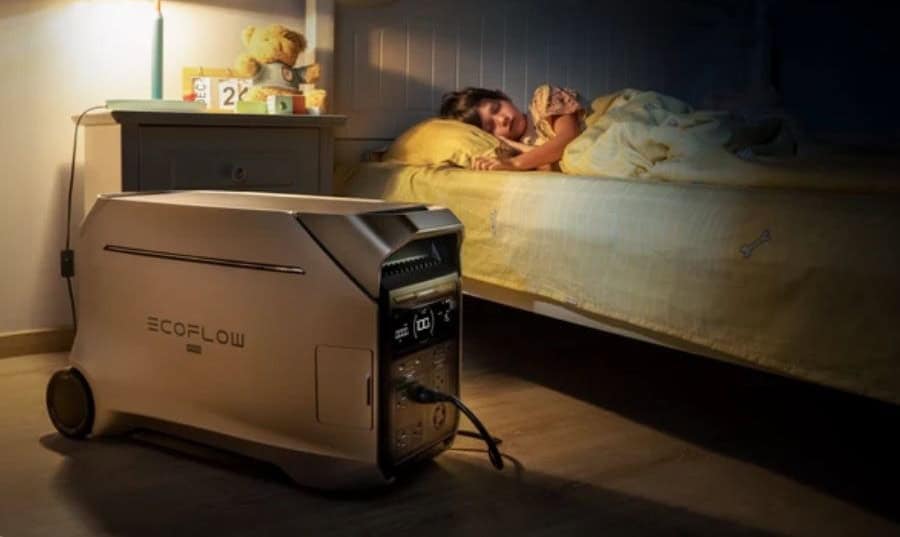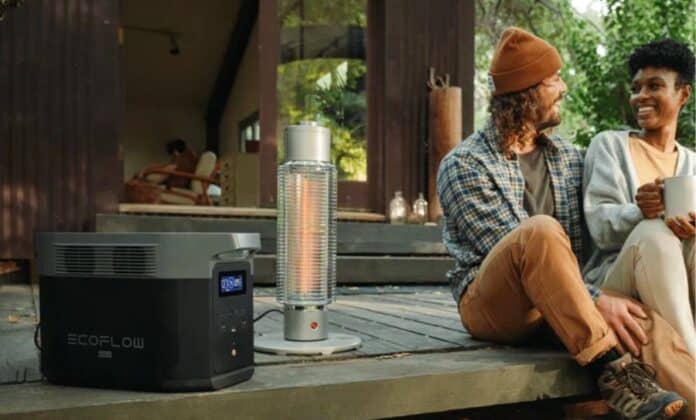Table of Contents
Space heaters are a popular choice for keeping homes warm, especially during the cold months in Australia. But have you ever wondered, how many watts does a space heater use and how it affects your electricity bill? Understanding energy consumption can help you make informed decisions about heating your home efficiently while keeping costs down. This guide will cover typical wattage, electricity usage, costs, comparisons with other appliances, and energy-saving tips.
What Is the Typical Wattage of Space Heaters in Australia?
Space heaters in Australia generally range from 750 watts to 3,000 watts. For residential use, most models operate with adjustable settings, typically 750 watts on low and 1,500 watts on high. Larger models, such as those used in industrial or commercial settings, can consume up to 3,000 watts but are not common in households.
Choosing the appropriate setting impacts both room temperature and energy consumption. The low setting is more energy-efficient but may be insufficient for larger rooms or colder climates, where the high setting is preferable.
How Much Electricity Does a Heater Use?
The electricity consumed by a space heater depends on the number of hours it’s in operation. Here’s how much electricity you can expect a 1,500-watt heater to use over various time periods.
Electricity Consumption Over Time
| Duration | Energy Consumption (kWh) | Daily (8 hours) | Weekly (56 hours) | Monthly (240 hours) | Yearly (2,920 hours) |
| 1,500-watt Heater | 1.5 kWh per hour | 12 kWh | 84 kWh | 360 kWh | 4,380 kWh |
To calculate the electricity usage, multiply the heater’s wattage by the number of hours it operates. This will give you the energy consumption in kilowatt-hours (kWh). For example, a 1,500-watt heater running for 8 hours a day will consume 12 kWh.
Cost Based on Energy Usage
By multiplying the kWh usage by your local electricity rate, you can estimate the cost of running your heater. If your electricity rate is 33.7 cents per kWh (the average for New South Wales, for example), the cost would be:
- Daily cost: 12 kWh × $0.337 = $4.04 per day
- Monthly cost: 12 kWh × $0.337 × 30 days = $121.20 per month
- Yearly cost: 12 kWh × $0.337 × 365 days = $1,474.6 per year
These calculations provide a clear picture of how much it costs to run a space heater on a regular basis.
How Much Does It Cost to Run a Space Heater?
The cost of running a space heater varies depending on the electricity rates in your area. In Australia, electricity rates typically range from 24 to 45 cents per kWh, depending on your state. Based on the electricity consumption chart and the cost formula above, we summarize the cost of running a 1,500-watt space heater for 1 hour across different states below.
Electricity Rates by State (in $AUD)
| State | Average Electricity Rate | Hourly Cost for 1,500-watt Heater |
| New South Wales | 33.7 cents per kWh | $0.50 |
| Victoria | 24.8 – 34.1 cents per kWh | $0.37 – $0.51 |
| Queensland | 33.0 cents per kWh | $0.50 |
| South Australia | 43.6 cents per kWh | $0.65 |
| Tasmania | 28.1 cents per kWh | $0.42 |
Monthly Running Cost (Based on 8 Hours of Daily Use)
| State | Monthly Cost for 1,500-watt Heater |
| New South Wales | $121.20 |
| Victoria | $89.28 – $122.76 |
| Queensland | $118.80 |
| South Australia | $157.68 |
| Tasmania | $101.16 |
These estimates show how much it would cost to run a 1,500-watt heater for 8 hours a day in each state. Keep in mind that the costs will vary depending on how many hours you run your space heater and the exact electricity rate.
Do Space Heaters Use a Lot of Electricity?
It’s essential to compare the electricity consumption of space heaters to other common household appliances to determine if they use a lot of electricity. Here’s a breakdown of how much electricity space heaters typically consume compared to other devices:
- Space heater: 1,500 watts on high setting
- Television: Between 80 watts and 400 watts
- Computer: Typically uses around 400 watts, though rarely at full capacity
- Refrigerator: Generally uses between 100 watts and 250 watts
- Dishwasher: Uses around 1,800 watts per cycle
- Blender: Typically around 400 watts
- Fan: Does fan use a lot of electricity? Well, the average tower fan uses about 100 watts, while ceiling fans use between 15 watts to 90 watts
As seen above, space heaters consume significantly more electricity than most household appliances. If you’re wondering how many watts does a small space heater use, the answer is typically between 500 and 1,000 watts, depending on the model. While these smaller units use less power than larger ones, they can still contribute to a high electricity bill if used inefficiently.
How Can You Use a Space Heater Efficiently to Save on Energy Costs?
While space heaters can consume a lot of electricity, they can still be an affordable heating solution when used correctly. Here are some tips for maximizing efficiency and saving on energy costs:
1.Use the Heater in One Room Only
To reduce energy consumption, only use your space heater in the room you’re currently occupying. Rather than heating the entire house, focus on warming up the space you need. This way, you can turn down the thermostat on your central heating system, which will save energy.
For example, if you’re spending time in the living room with your family, rely on the space heater to keep the room warm, and reduce the central heating in other areas of the house. This targeted approach can help reduce the overall energy demand.
2.Improve Insulation and Close Doors
Ensure that the room you’re heating is well-insulated. Close windows and doors to prevent heat from escaping. Using curtains or blinds at night can also help retain heat. If possible, consider using draft stoppers or sealing cracks around windows and doors to improve energy efficiency.
3.Use the Right Heater for Your Space
Choose a space heater that suits the size of your room. A small space heater in a large room will work harder to maintain the desired temperature, consuming more energy. By choosing the right size, you can reduce energy wastage.
4.Wear Warm Clothing
In addition to using a space heater, wear warm clothing like sweaters and socks. Layering up can help you feel comfortable at lower temperatures, allowing you to turn down the heater or use it less frequently.
5.Switch to Renewable Energy
If you’re serious about reducing your carbon footprint and energy costs, consider switching to 100% renewable energy. Many Australian energy providers offer renewable energy plans that can help you power your home more sustainably.
One option to power your home more efficiently, especially when using high-energy devices like space heaters, is the EcoFlow DELTA Pro 3 Portable Power Station. With a capacity of 4kWh to 12kWh and 230V, 4,000W power output, it can support space heaters efficiently and reduce reliance on costly grid power. Its quiet operation (30 dB) and rapid charging make it a practical backup power source, helping you stay warm without overspending on electricity.
By using renewable energy solutions like this, you can ensure that your space heater and other household appliances run efficiently and sustainably, lowering both your energy costs and carbon emissions.

Conclusion
Understanding how many watts does a space heater use is key to managing energy costs effectively. While space heaters consume more electricity than many household appliances, using them wisely can help reduce your energy bill. Focus on heating only occupied spaces, improving insulation, and switching to renewable energy sources. For a reliable and eco-friendly power solution, consider the EcoFlow DELTA Pro 3 Portable Power Station—a powerful, quiet, and fast-charging battery generator designed to keep your home running efficiently.
FAQs
Are all space heaters 1500 watts?
No, not all space heaters are 1500 watts. Space heaters vary in wattage, typically ranging from 750 watts to 3,000 watts. Small space heaters may use 500–1,000 watts, while larger commercial units can exceed 2,000 watts. Always check the heater’s label or manual to determine its specific power consumption.
How many solar panels does it take to power a space heater?
A 1500-watt space heater needs about 1.5 kWh per hour. A single 300-watt solar panel generates around 1.2 kWh per day, so you’d need at least 5–6 solar panels to run a heater continuously for several hours. Adding a battery storage system can help ensure stable power during cloudy days or nighttime use.
Does a space heater consume electricity when it’s off?
Most space heaters do not use electricity when turned off, but some models with standby modes, timers, or digital displays may still draw a small amount of power. To ensure zero energy usage, unplug the heater when not in use or use a power strip with an off switch.


